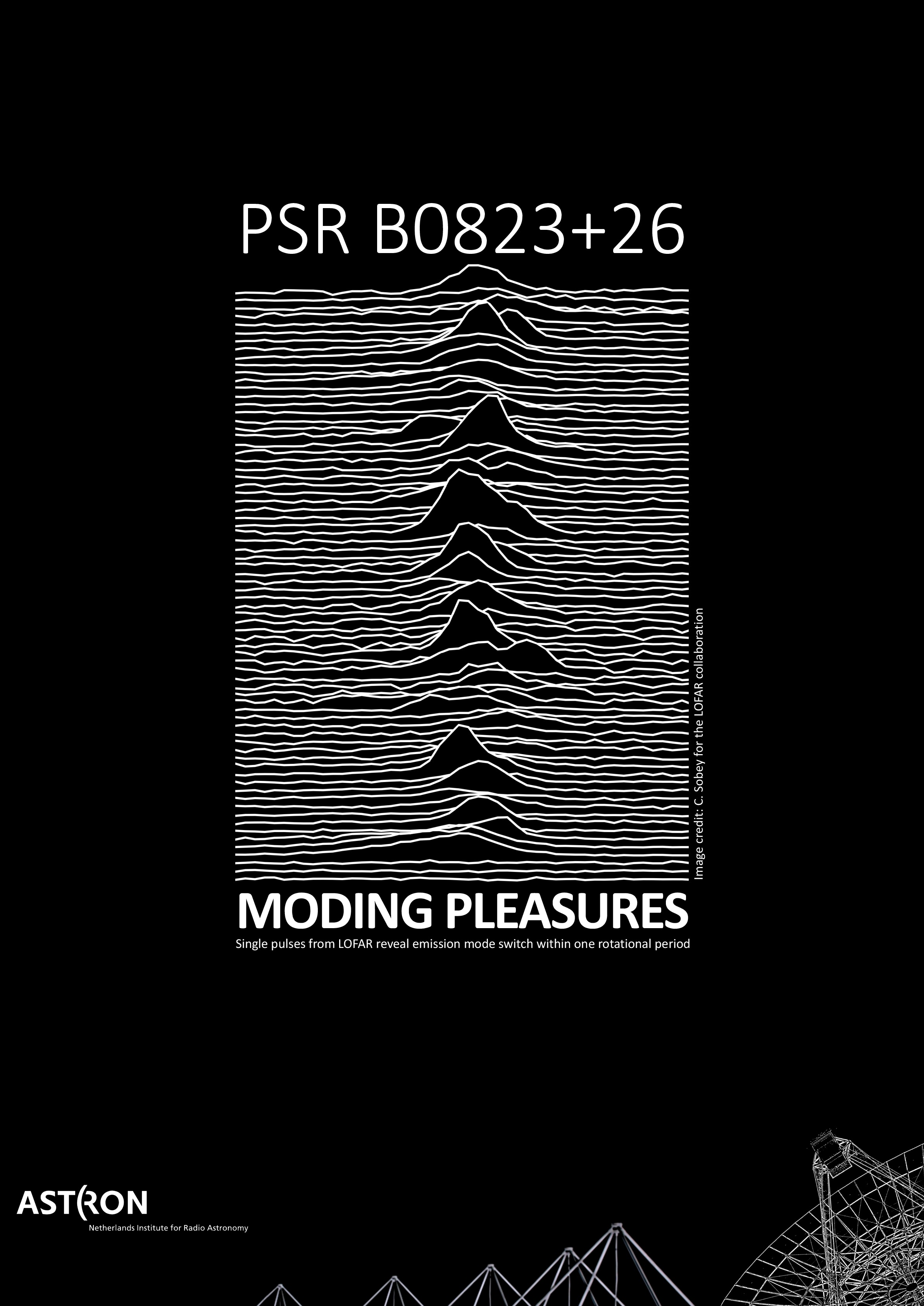Daily Image
12-09-2014PSR B0823+26: Emission modes in single pulses
| Submitter: | Charlotte Sobey |
| Description: | The poster above won 3rd prize in the Astronomy Pretty Poster Pageant (APPP) 2014. All entries are available for editing and outreach purposes within ASTRON. The average pulse profile shapes of radio pulsars are remarkably stable when summed over at least a few hundred rotations. This reflects their clock-like rotational predictability, and enables their use as precision physical probes, for example, towards testing theories of gravity. Nonetheless, pulsar emission variability has been recognised on almost all timescales that are observationally accessible: from nano-second 'shots', expected to be the quanta of pulsar emission; to multidecadal variations, presumably due to evolution of the magnetic field. PSR B0823+26 displays a plethora of magnetospheric emission characteristics over a wide range of timescales. Low radio-frequency, single-pulse observations obtained using LOFAR (the Low-Frequency Array telescope) provided us with a fresh look at this pulsar. This allowed us to identify a sporadic and weakly-emitting 'quiet' mode over hour-long periods, which displays rotating radio transient-like features and a nulling fraction forty-times greater than that during the more regularly-emitting 'bright' mode. Furthermore, the transition from the newly-discovered 'quiet' mode (the lower three nulls from the bottom of the image) to the 'bright' mode (the rest of the pulses in the image) occurs within one rotational period of the pulsar (0.5 s), and is concurrent across a broad range of radio frequencies. Studying pulsars like PSR B0823+26 (including PSR B0943+10 - another interesting mode changing pulsar - see here and here for previous daily images) furthers our insight into the relationship between the host of magnetospheric radio emission characteristics and what they might teach us about the elusive magnetospheric radio emission mechanism. The paper describing these and further results has been submitted. |
| Copyright: | C. Sobey on behalf of the LOFAR collaboration; no connection with Joy Division, Peter Saville, et al. |
| Tweet |  |
